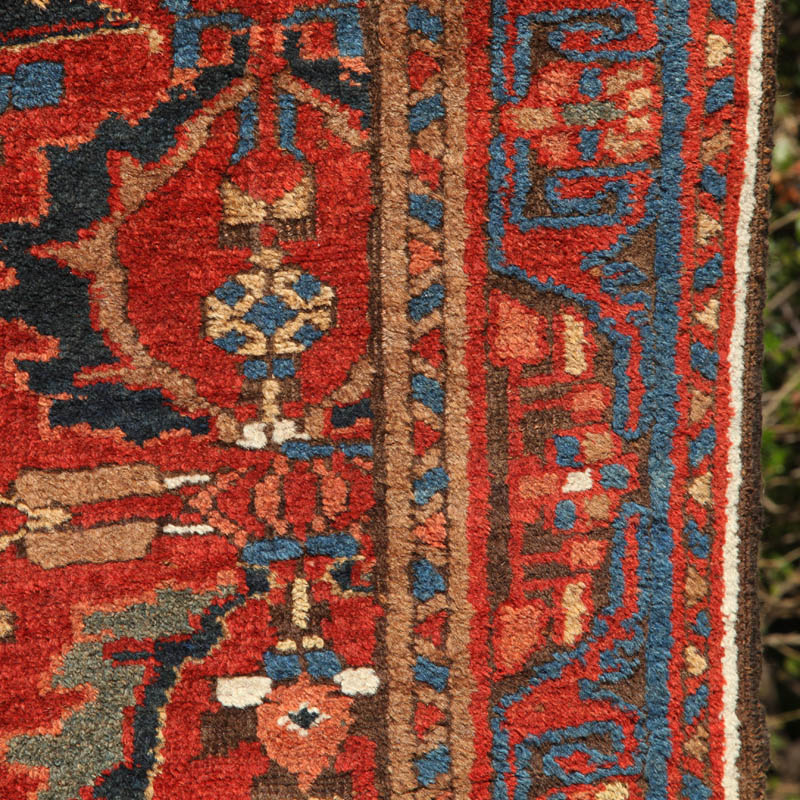Click on image to view in larger size
See very large image of palmette Bijar [3.3MB].
A beautiful mirrored repeat design with large palmettes flanked by serrated sickle leaves, The groups of mirrored palmettes are separated by horizontal bands of somewhat irregular rosettes. An unusual border that I cannot work out, perhaps an abstract version of the Herati design.
The weave indicates that this long rug is of Kurdish origin from around Bijar, though knots are not fully depressed. The wool foundation and the excellent natural dyes both point to a relatively early date before most Bijar workshop production, probably end of 19th century.
The rug measures 8ft.5in. x 4ft.1in. (257 x 125 cm). It is not quite as deeply depressed as later workshop Bijars; I guess the angle is about 80°. Thick medium brown s-twined handspun wool warps (varying thickness), often of slightly differing colour. First heavy weft followed by thin sinous weft. This makes the structure fairly rigid (although it folds better than fully depressed Bijars, with the pile outside) and quite heavy. The weave is relatively coarse, should be symmetrical knots as usual for Bijar weave though I cannot verify that. The horizontal knot count is h.24/10, the vertical knot count is v.31/10, which means roughly 744 knots/dm2 (or, converted to to inches, approx. h.6,v.8 = approx. 48 kpsi).
The pile is good and fairly even, apart from an area of corroded brown in a central palette at the lower end (see images). Selvages have several cords (2-4) wrapped in brown wool, have been restored recently by Walter Brew. Outer guard missing at lower end, half of it missing at the top. Walter has also professionally secured the ends.
A nice and earthy palette with quite a lot of different shades. The dark to medium brick red of the ground forms a beautiful abrash. Then there are several browns (some of them may be the natural sheep fleece colour); a light reed yellow and a muted honey yellow; a beautiful range of indigo blues from sky blue to medium dark in the main border; a very dark teal blue-green used in the sickle leaves and the outer palmettes; a turquoise green, a greyish green and a bit of moss green; a light brick to brownish rose shade in the details; and off-white. All dyes are clearly natural.






